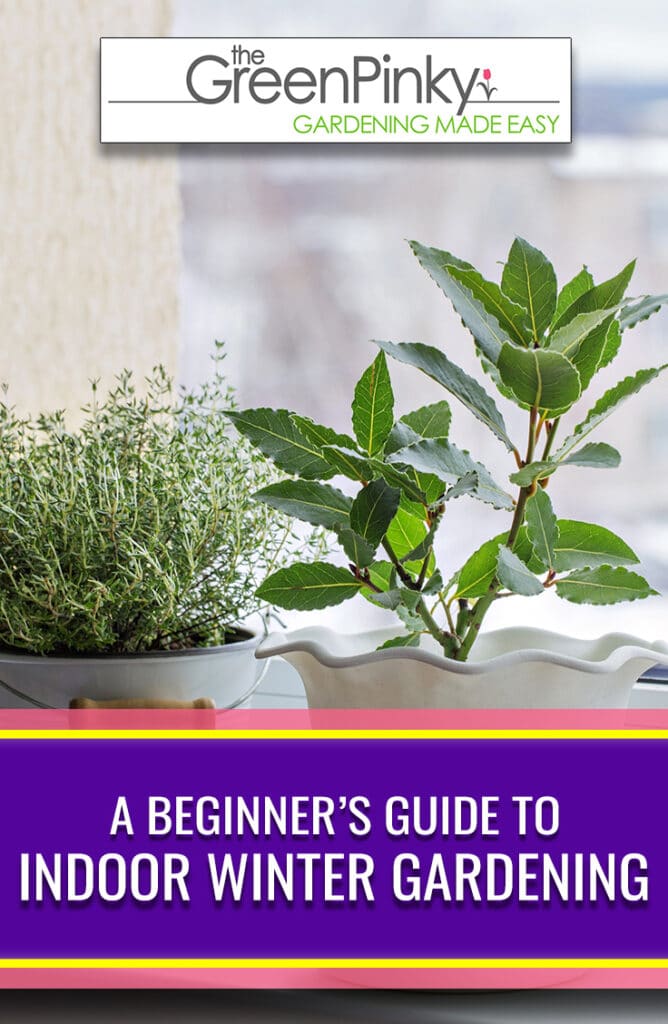Indoor Gardening Tips for Cold Seasons: Nurturing Nature Within

As the cold weather sets in, many of us bid farewell to our outdoor gardens, believing that our green thumb must hibernate until spring. But what if I told you that you could bring the beauty and benefits of gardening indoors? Indoor gardening in cold seasons is not just a hobby; it's a way to keep your home vibrant, improve air quality, and even boost your mood. So, are you ready to transform your home into a lush, green sanctuary? Let's dive in!
Understanding Winter Plant Care
Before we delve into the tips, it's essential to understand that winter plant care is different from other seasons. Indoor plants in winter face reduced light, dry air, and cooler temperatures. Your first step is to recognize these changes and adapt your care routine accordingly.
Light: The Fuel for Indoor Growing
Light is the food for your plants, and it's scarce in winter. To ensure your plants thrive:
- Place them near south-facing windows for maximum light exposure.
- Rotate your plants regularly to prevent them from leaning towards the light source.
- Consider using artificial grow lights to supplement natural light. LED grow lights can be a great investment for serious indoor gardeners.
Water: The Essence of Life
Watering is a balancing act, especially in winter. Overwatering can lead to root rot, while underwatering can leave your plants parched. Here's what to do:
- Reduce watering frequency, as plants need less water in cold weather.
- Check the soil moisture before watering. Stick your finger about an inch into the soil—if it's dry, it's time to water.
- Use lukewarm water to avoid shocking your plants' roots.

Choosing the Right Plants for Indoor Gardening
Not all plants are created equal, especially when it comes to indoor gardening tips for cold seasons. Some plants thrive indoors, while others struggle. Here are some cold-hardy indoor plants to consider:
- Snake Plant (Sansevieria) - Tolerates low light and infrequent watering.
- ZZ Plant (Zamioculcas zamiifolia) - Extremely drought-tolerant and thrives in low light.
- Pothos (Epipremnum aureum) - A versatile trailing plant that can survive in lower light conditions.
- Spider Plant (Chlorophytum comosum) - Adapts well to various conditions and is great for hanging baskets.
Humidity: Creating a Tropical Oasis
Central heating can make indoor air dry, which isn't ideal for most plants. To increase humidity:
- Group plants together to create a humid microclimate.
- Place a tray of pebbles and water near your plants. As the water evaporates, it increases humidity.
- Mist your plants regularly using a spray bottle.
Temperature: Finding the Sweet Spot
Most indoor plants prefer temperatures between 65-75°F (18-24°C) during the day and a drop of about 10°F (5°C) at night. Keep your plants away from drafty areas, heating vents, and radiators.
Fertilizing: Feeding Your Green Friends
Plants grow slower in winter, so they need less fertilizer. Here's what to do:
- Reduce fertilizing frequency to about once every 6-8 weeks.
- Use a balanced, water-soluble houseplant fertilizer.
- Always follow the package instructions to avoid overfeeding.
Pest Control: Keeping the Bad Guys at Bay
Indoor plants can attract pests like spider mites, mealybugs, and scale insects. To keep them at bay:
- Inspect new plants thoroughly before bringing them home.
- Isolate new plants for a few weeks to ensure they're pest-free.
- Regularly check your plants for signs of pests and treat any issues promptly.
Conclusion: Embracing the Beauty of Indoor Gardening
Indoor gardening in cold seasons is a rewarding hobby that brings nature into your home. By understanding winter plant care, choosing the right plants, and providing the best conditions, you can create a thriving indoor garden. Don't let the cold weather deter you—embrace the challenge and watch your green sanctuary flourish.
Happy gardening! I'd love to hear about your indoor gardening adventures. Share your stories and tips in the comments below.
FAQs
What are the best indoor plants for low light? Some of the best indoor plants for low light include the snake plant, ZZ plant, pothos, and spider plant. These plants are known for their tolerance to lower light conditions.
How often should I water my indoor plants in winter? Watering frequency depends on the plant type, size, and potting medium. However, as a general rule, reduce watering in winter as plants need less water in cold weather. Always check the soil moisture before watering.
What temperature is best for indoor plants? Most indoor plants prefer temperatures between 65-75°F (18-24°C) during the day and a drop of about 10°F (5°C) at night. However, some plants may have different temperature preferences.
How can I increase humidity for my indoor plants? You can increase humidity by grouping plants together, placing a tray of pebbles and water near your plants, or misting your plants regularly using a spray bottle.
How do I know if my indoor plant has pests? Signs of pests on indoor plants include tiny spots or specks on leaves, sticky residue (honeydew), white cottony masses, and small insects visible on the plant. Regularly inspect your plants for these signs and treat any issues promptly.
0 Response to "Indoor Gardening Tips for Cold Seasons: Nurturing Nature Within"
Post a Comment